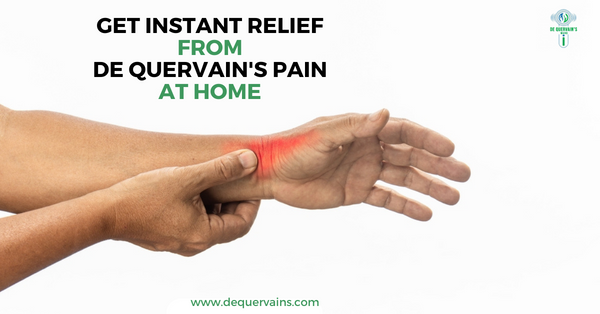How is De Quervain’s Tenosynovitis Treated in Pregnancy?
De Quervain’s tenosynovitis, a painful condition affecting the tendons in the thumb and wrist, can be particularly challenging during pregnancy. As an expectant mother, addressing this condition requires careful consideration of both the mother’s well-being and the baby’s safety.
I. Introduction
A. Definition of De Quervain’s Tenosynovitis
De Quervain’s tenosynovitis is a condition that involves inflammation of the tendons on the thumb side of the wrist. It often results in pain and swelling, impacting the hand’s functionality.
B. Prevalence in Pregnancy
Pregnant women may be more susceptible to this condition due to hormonal changes, fluid retention, and increased demands on the hands.
II. Causes and Symptoms
A. Understanding the Causes
De Quervain’s tenosynovitis can be caused by repetitive hand movements, strain, or direct injury. In pregnancy, hormonal changes may exacerbate these factors.
B. Identifying Symptoms in Pregnant Women
Symptoms include pain, swelling, and difficulty moving the thumb. Recognizing these signs early is crucial for effective treatment.
III. Diagnosis
A. Medical Examination
A healthcare provider will conduct a physical examination, evaluating the hand’s range of motion and identifying areas of tenderness.
B. Diagnostic Tests
In some cases, imaging tests like ultrasound may be used to confirm the diagnosis.
IV. Challenges in De Quervain’s tenosynovitis Treatment during Pregnancy
A. Safety Concerns
Choosing the right De Quervain’s tenosynovitis home treatment is essential to ensure the safety of both the mother and the developing fetus.
B. Impact on the Mother and Baby
Untreated De Quervain’s tenosynovitis can affect a pregnant woman’s daily activities and potentially impact the baby’s well-being.
V. Non-surgical Treatment Options
A. Rest and Immobilization
Allowing the affected hand to rest and using splints or braces can alleviate symptoms.
B. Physical Therapy
Targeted exercises can strengthen the affected tendons and improve overall hand function.
C. Medications
Pregnancy-safe medications may be recommended to manage pain and inflammation.
VI. Lifestyle Modifications
A. Ergonomic Changes
Adopting ergonomic practices in daily activities can prevent strain on the affected hand.
B. Exercises and Stretches
Simple exercises and stretches can promote flexibility and reduce discomfort.
VII. Surgical Intervention
A. Considerations in Pregnancy
Surgery is generally considered a last resort during pregnancy due to potential risks. It may be explored if non-surgical methods prove ineffective.
B. Effectiveness and Risks
The benefits and risks of surgery should be carefully weighed, taking the unique circumstances of pregnancy into account.
VIII. Alternative Therapies
A. Acupuncture
Some pregnant women find relief through acupuncture, a holistic approach that stimulates specific points in the body.
B. Herbal Remedies
Herbal treatments, when approved by healthcare professionals, may offer complementary support.
IX. Importance of Early Intervention
A. Preventing Complications
Early detection and intervention can prevent the condition from worsening and reduce the risk of complications.
B. Improving Quality of Life
Effective treatment enhances the quality of life for pregnant women, allowing them to navigate daily activities with greater ease.
X. Case Studies
A. Real-life Experiences
Exploring cases where pregnant women successfully managed De Quervain’s tenosynovitis can provide valuable insights.
B. Positive Outcomes
Highlighting positive outcomes reinforces the message that effective treatment is possible during pregnancy.
XI. Expert Advice
A. Insights from Healthcare Professionals
Experts in obstetrics and orthopedics can offer tailored advice for pregnant women dealing with this condition.
B. Customized Treatment Plans
Personalized De Quervain’s tenosynovitis treatment plans, considering the unique aspects of pregnancy, can optimize outcomes.
XII. Coping Strategies for Pregnant Women
A. Emotional Support
Dealing with pain during pregnancy can be emotionally taxing. Emotional support is vital for well-being.
B. Pain Management Techniques
Learning pain management techniques equips pregnant women to cope with discomfort more effectively.
XIII. Balancing Self-Care and Pregnancy
A. Importance of Self-Care
Prioritizing self-care is essential for overall health during pregnancy, including managing conditions like De Quervain’s tenosynovitis.
B. Safe Practices for Pregnant Women
Guidelines for safe practices empower pregnant women to make informed choices regarding their well-being.
XIV. Future Considerations
A. Research and Innovations
Ongoing research may lead to new insights and innovative treatments for De Quervain’s tenosynovitis Treatment during pregnancy.
B. Potential Breakthroughs
Keeping abreast of developments in the medical field ensures access to cutting-edge treatments in the future.
XV. Conclusion
A. Recap of Treatment Options
Summarizing the diverse treatment options underscores the importance of a multifaceted approach.
B. Empowering Pregnant Women with De Quervain’s Tenosynovitis
Empowering pregnant women with knowledge and support enables them to actively participate in their treatment journey.

